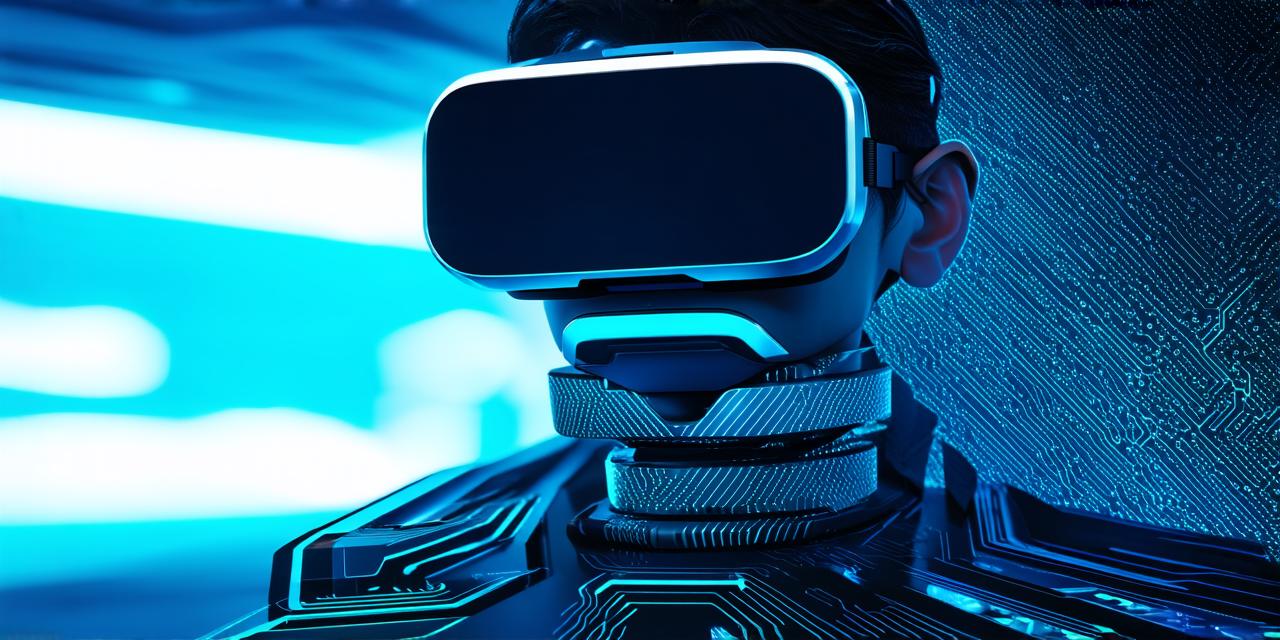The Early Years: VR and AR in the 1960s
Virtual reality can be traced back to the 1960s when computer scientists started experimenting with immersive environments and simulations. One of the pioneers in this field was Ivan Sutherland, who developed the first VR headset called the “Sword of Damocles” in 1968. This device used a projector to display stereoscopic images onto a pair of screens mounted on a helmet, creating an illusion of depth and immersion.
Meanwhile, AR was also being explored during this time. One of the earliest examples of AR can be traced back to the 1960s when researchers at the University of Illinois used a camera and projector to overlay images onto real-world objects.
The Evolution: VR and AR in the 1970s and 80s
In the 1970s, VR technology advanced significantly with the development of head-mounted displays (HMDs) that used electrostatic screens to display images. This allowed for more realistic simulations and immersion, paving the way for the modern VR industry.
During this time, AR also saw significant advancements, thanks to the availability of personal computers with graphics capabilities. One notable example was the “ARToolKit,” which was developed in 1979 by a team led by Tom Caudill at the University of Utah. This software allowed developers to create interactive AR applications by overlaying digital images onto real-world objects using a camera and projector.
The 1990s and Early 2000s: VR and AR Gain Traction
By the end of the 1980s, VR technology had become more accessible to the general public, thanks in part to the development of consumer-grade HMDs. These devices were often bulky and expensive, but they marked a turning point for the industry, as they allowed for more immersive experiences than ever before.
During this time, AR also continued to evolve, with the development of mobile applications that used GPS data to overlay digital information onto real-world environments. This technology was first popularized by apps like “Pokémon Go” and “Snapchat,” which allowed users to see virtual objects in their physical surroundings.
The Late 2000s: The Dawn of the VR Industry
By the end of the 2000s, VR technology had become more sophisticated and accessible, with the development of motion controllers that allowed users to interact with virtual objects in a natural way. This led to the emergence of the VR industry, which has since grown exponentially, driven by advancements in hardware, software, and content.
The Future: What’s Next for VR and AR?
As VR and AR technology continues to advance, there are several exciting trends and developments on the horizon. One notable trend is the integration of haptic feedback into VR experiences, which will allow users to feel physical sensations in virtual environments. This technology is already being used in gaming and could have significant implications for other industries, such as education and training.
Another area of innovation is the development of wearable devices that integrate both VR and AR capabilities. These devices could allow users to seamlessly switch between virtual and augmented environments, creating a more immersive and natural experience.
Finally, there is the growing potential for VR and AR technology to be used in the field of mental health and therapy. For example, virtual reality can be used to simulate real-life situations that trigger anxiety or PTSD, allowing patients to confront and overcome their fears in a safe and controlled environment. Similarly, augmented reality can be used to provide visual cues and prompts for people with conditions such as dyslexia or ADHD.
Summary: A Brief History of VR and AR
The history of virtual and augmented reality is a fascinating journey that spans decades of innovation and experimentation. From their early beginnings to the modern-day industry, VR and AR have transformed the way we interact with technology and each other. As these technologies continue to evolve, they will undoubtedly play an even more significant role in shaping our future.
FAQs
1. What is the difference between virtual reality (VR) and augmented reality (AR)?
Virtual reality involves creating a completely artificial environment that users can interact with, while augmented reality involves overlaying digital information onto real-world environments.
2. Who was the first person to develop virtual reality technology?
Ivan Sutherland is widely credited with developing the first virtual reality headset called the “Sword of Damocles” in 1968.
3. When did augmented reality technology first become popularized?
Augmented reality technology became more popularized in the 1990s, thanks to the availability of personal computers with graphics capabilities and mobile applications that used GPS data to overlay digital information onto real-world environments.
4. What are some examples of industries that use VR and AR technology?

Virtual reality and augmented reality technology is being used across a range of industries, including gaming and entertainment, education and healthcare, marketing, e-commerce, and more.
